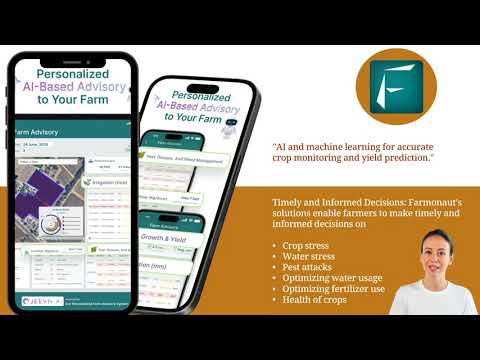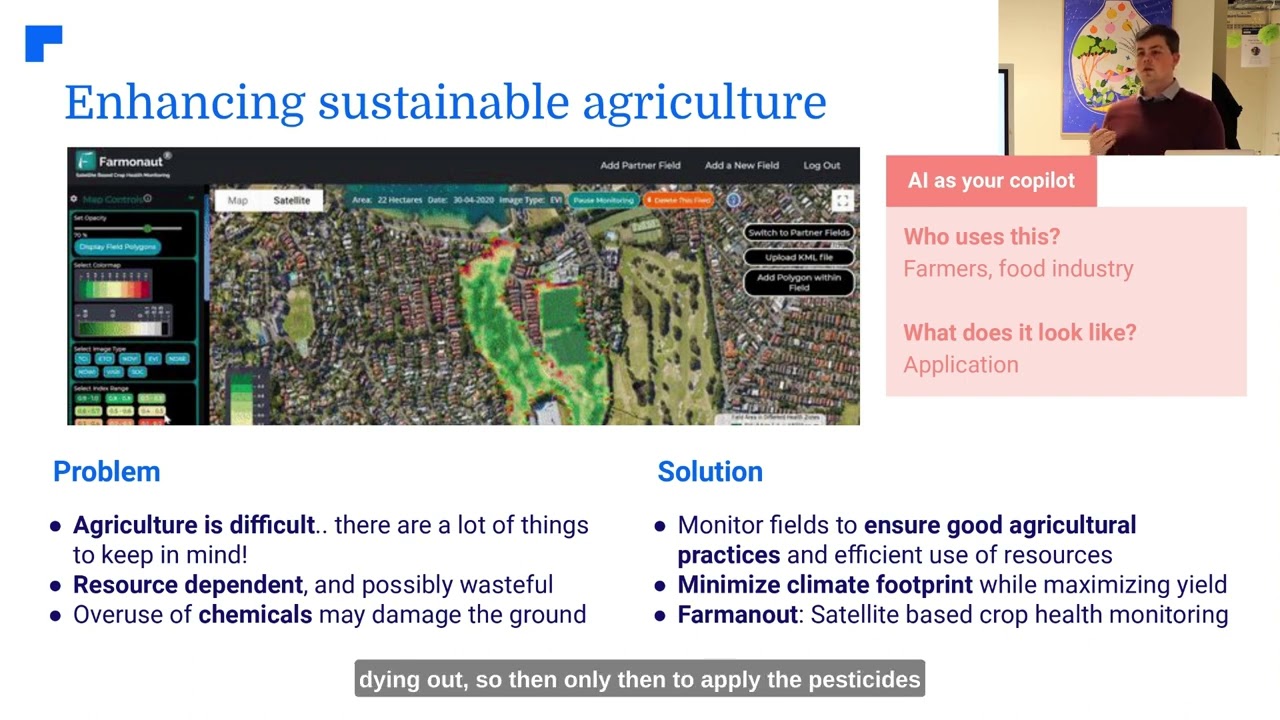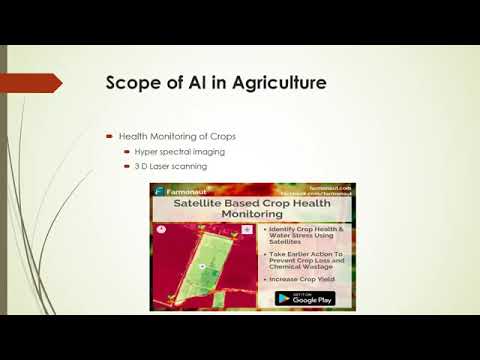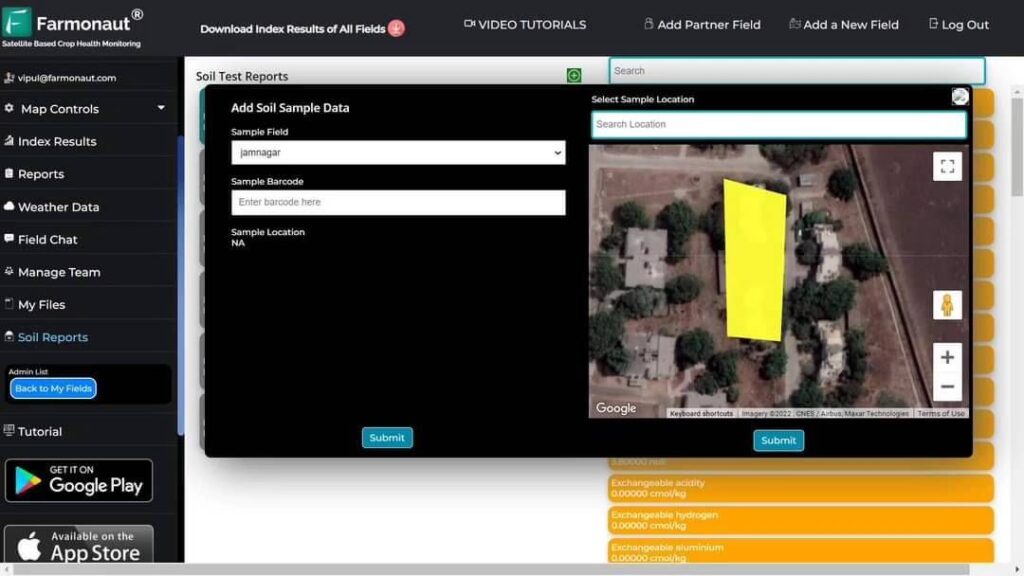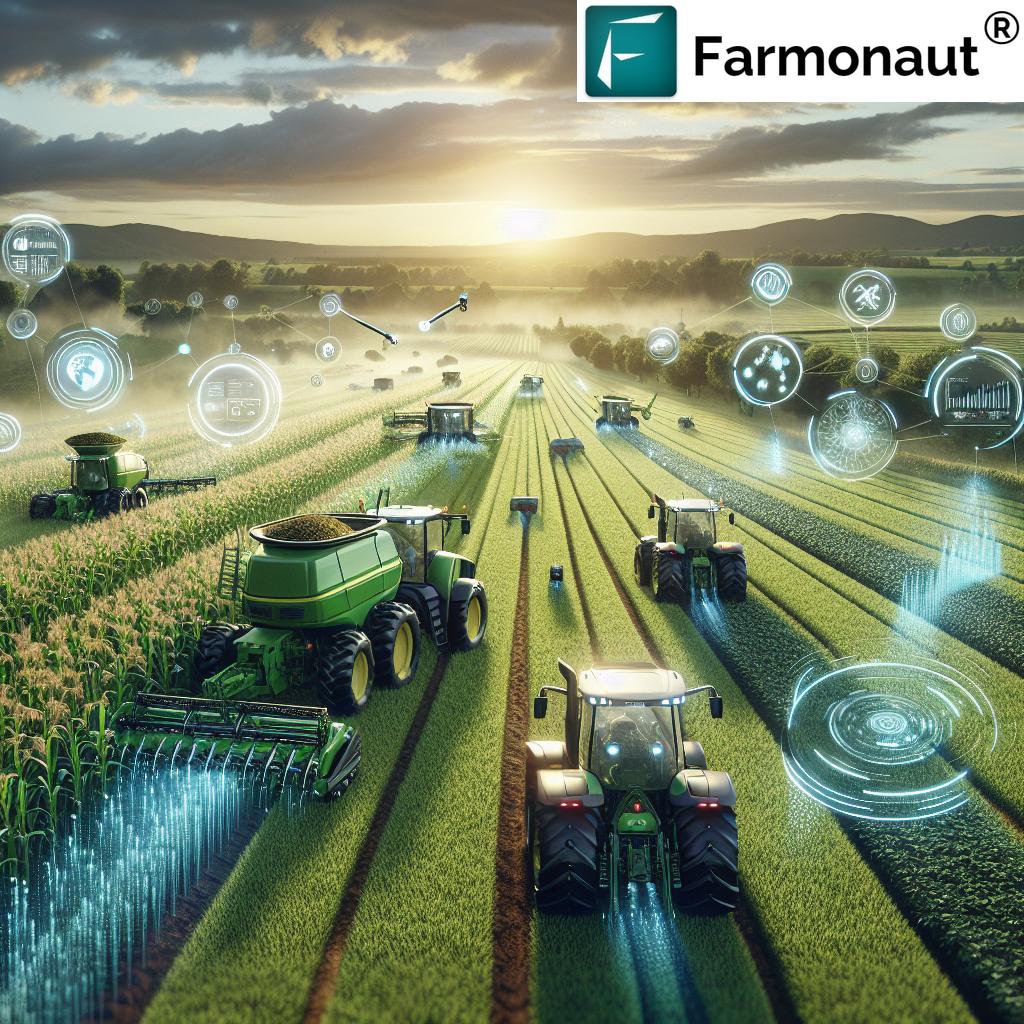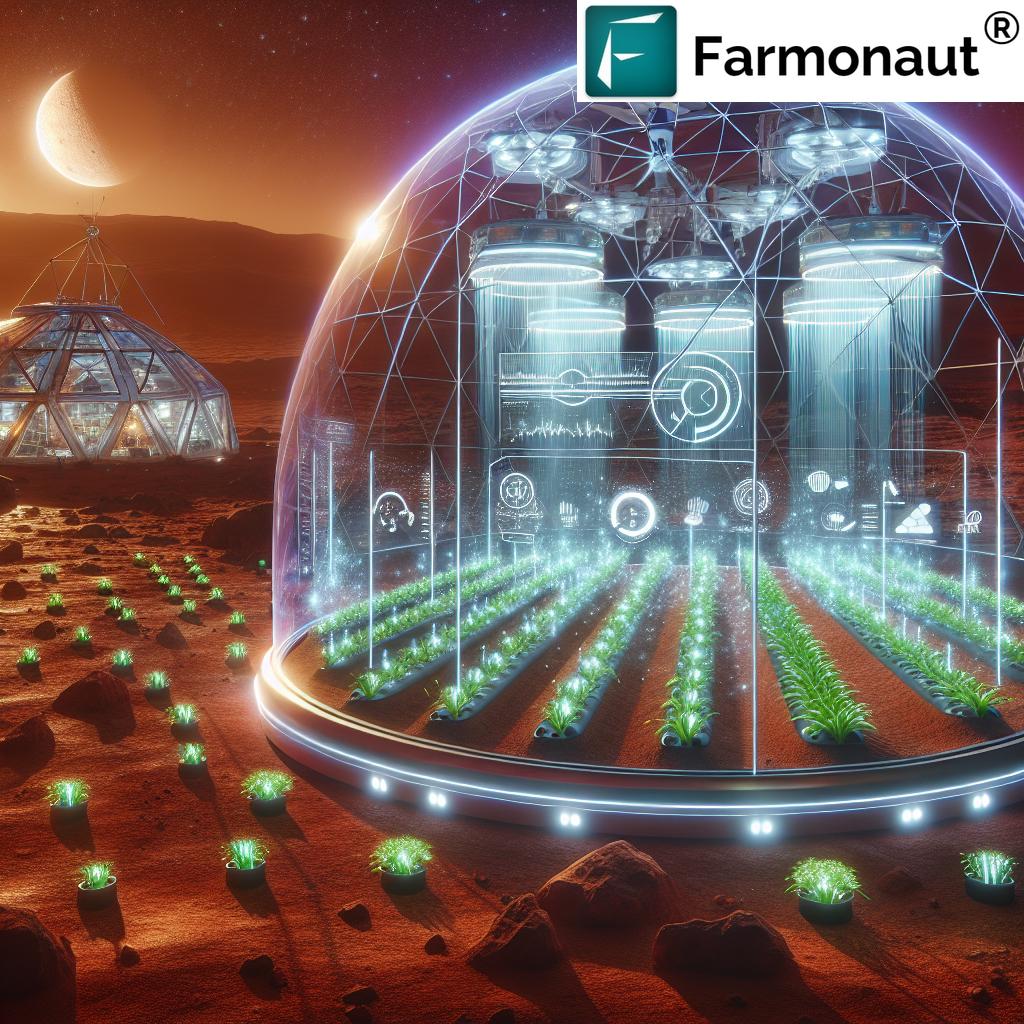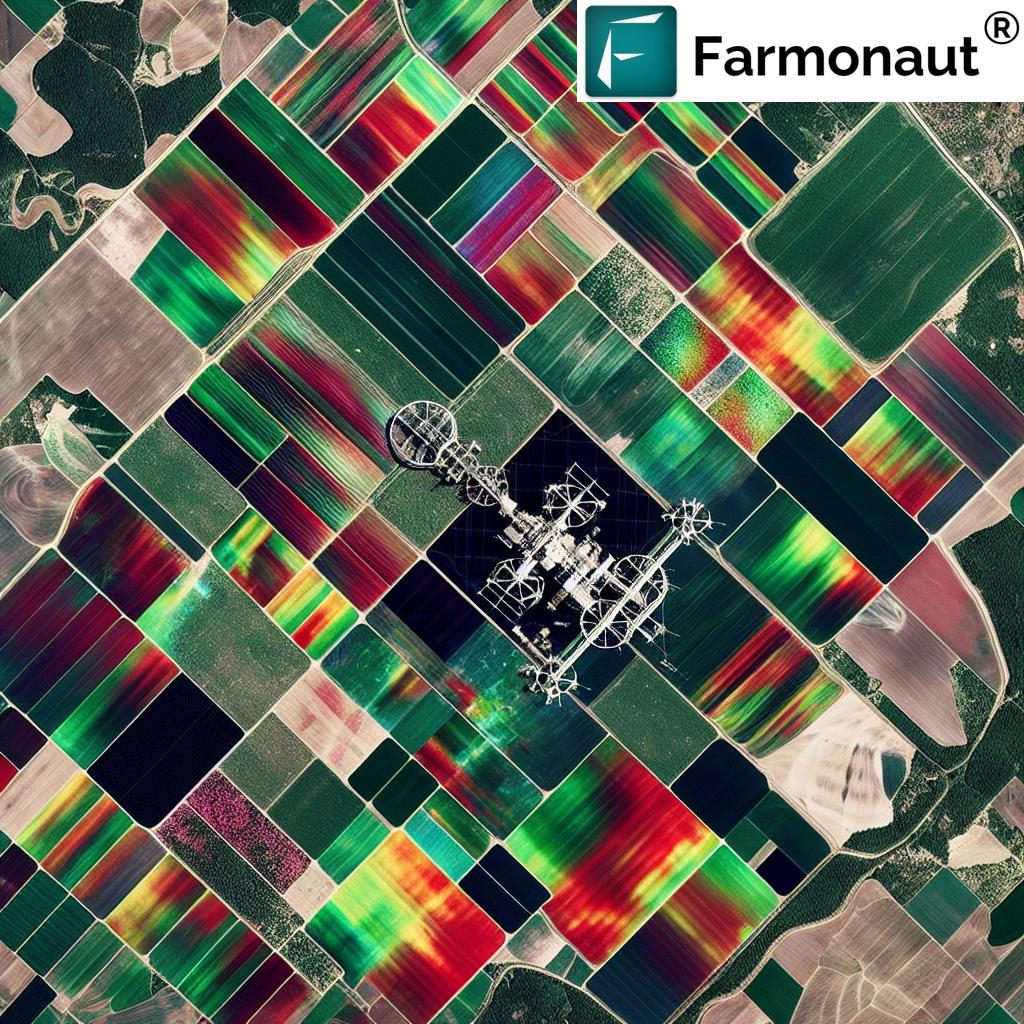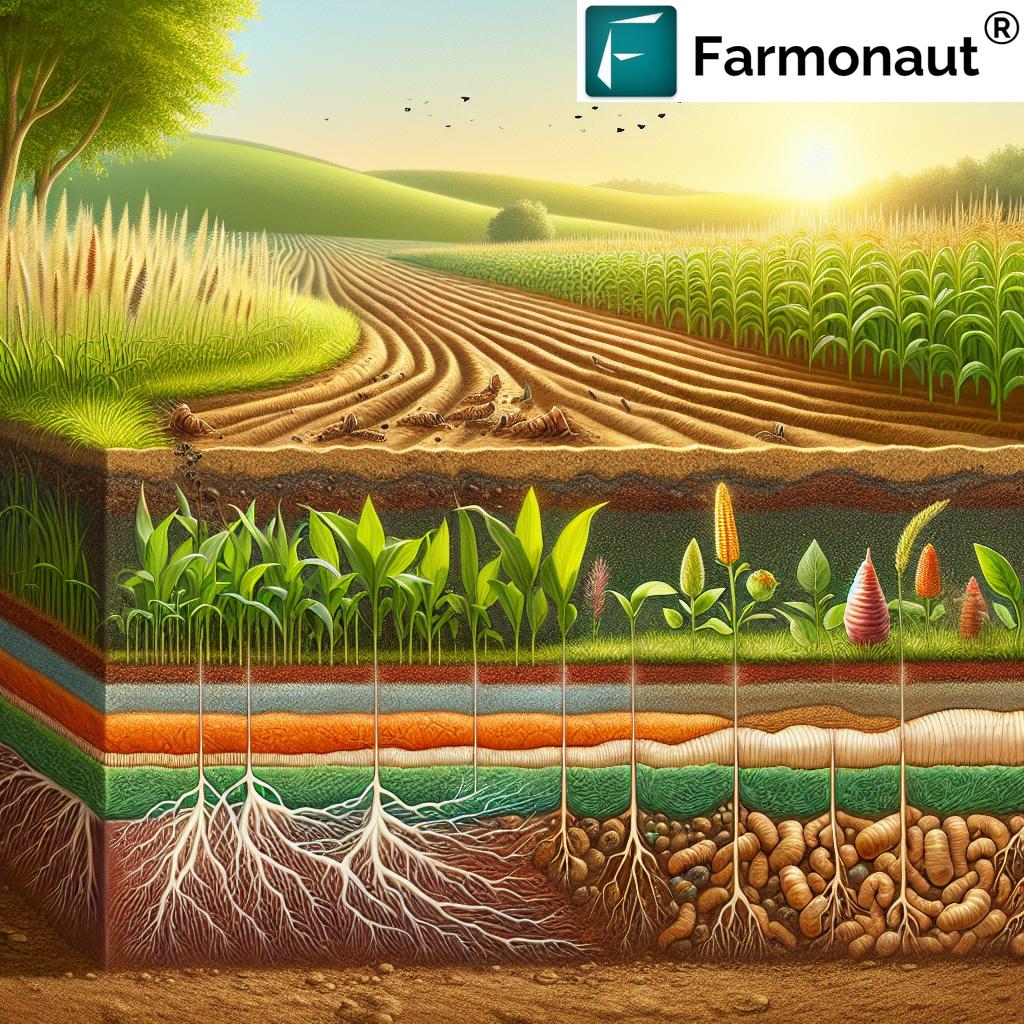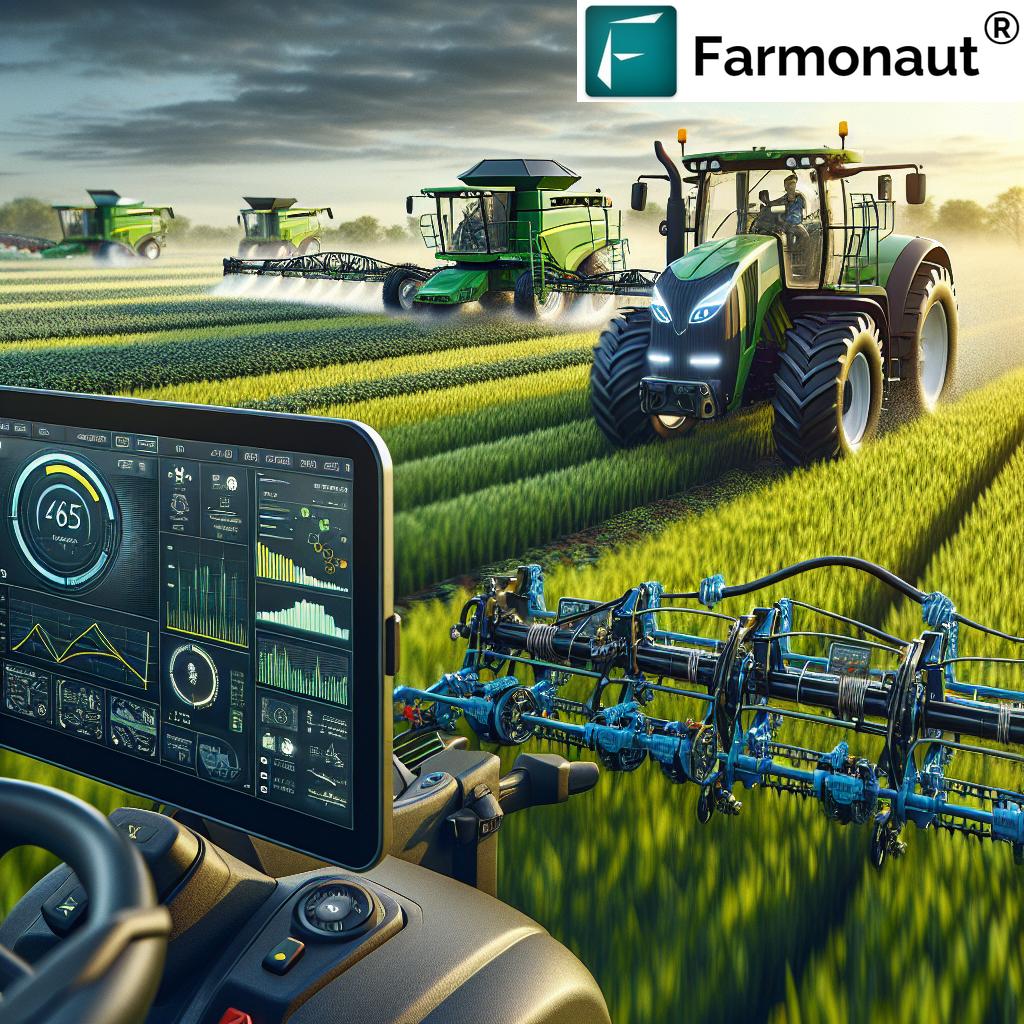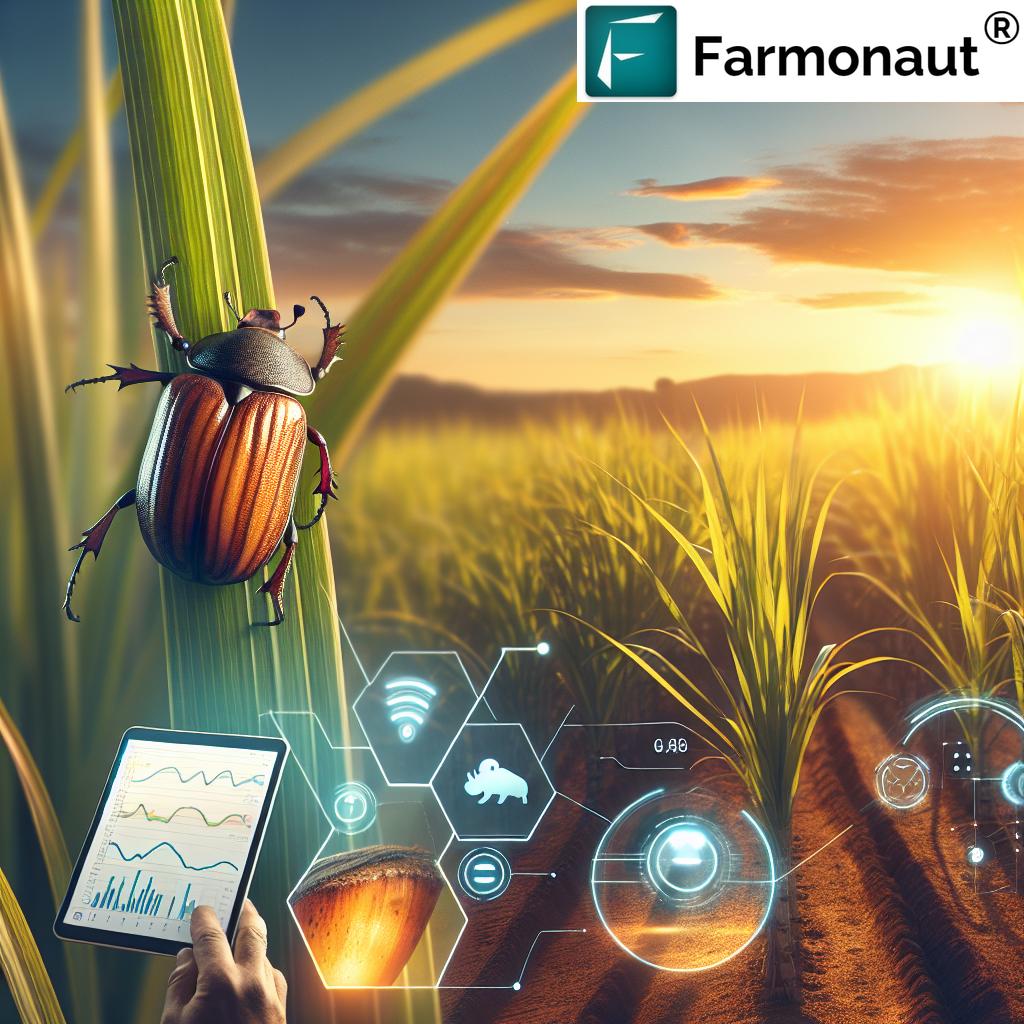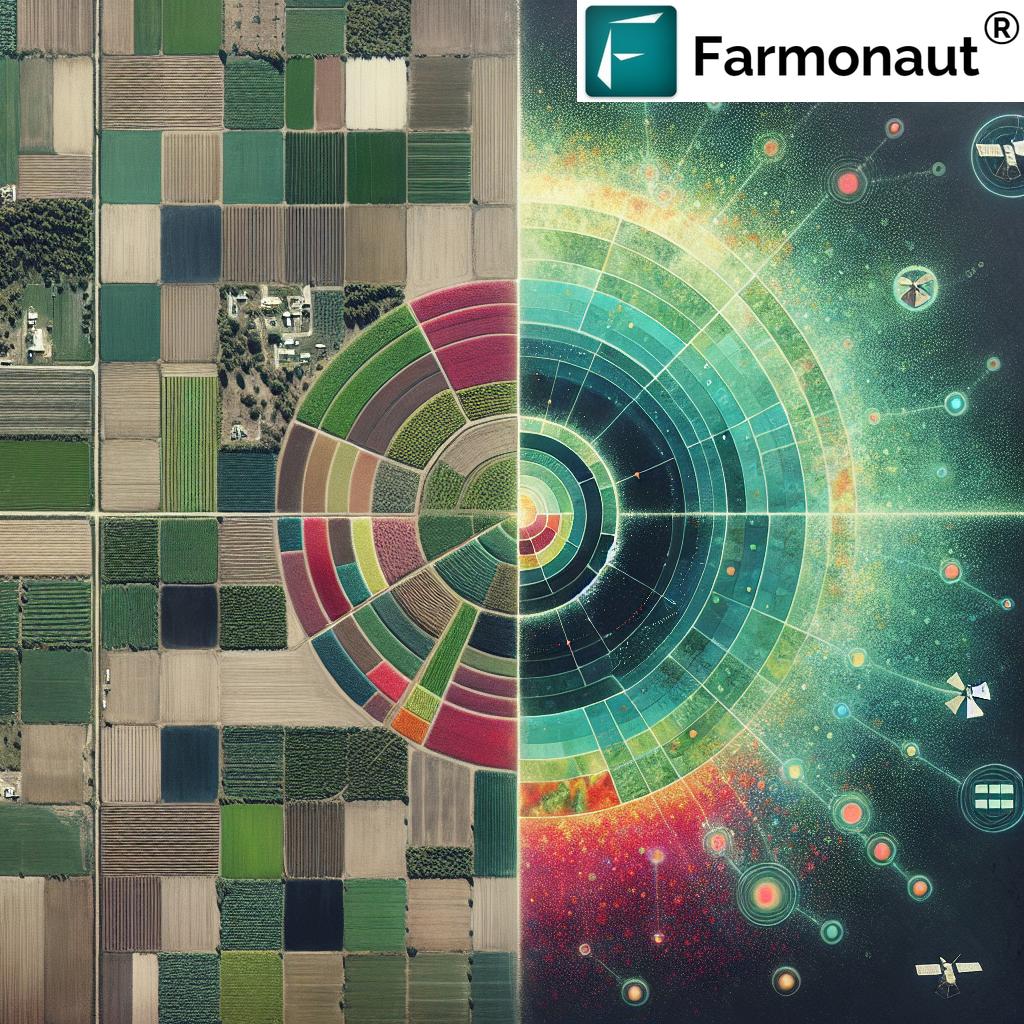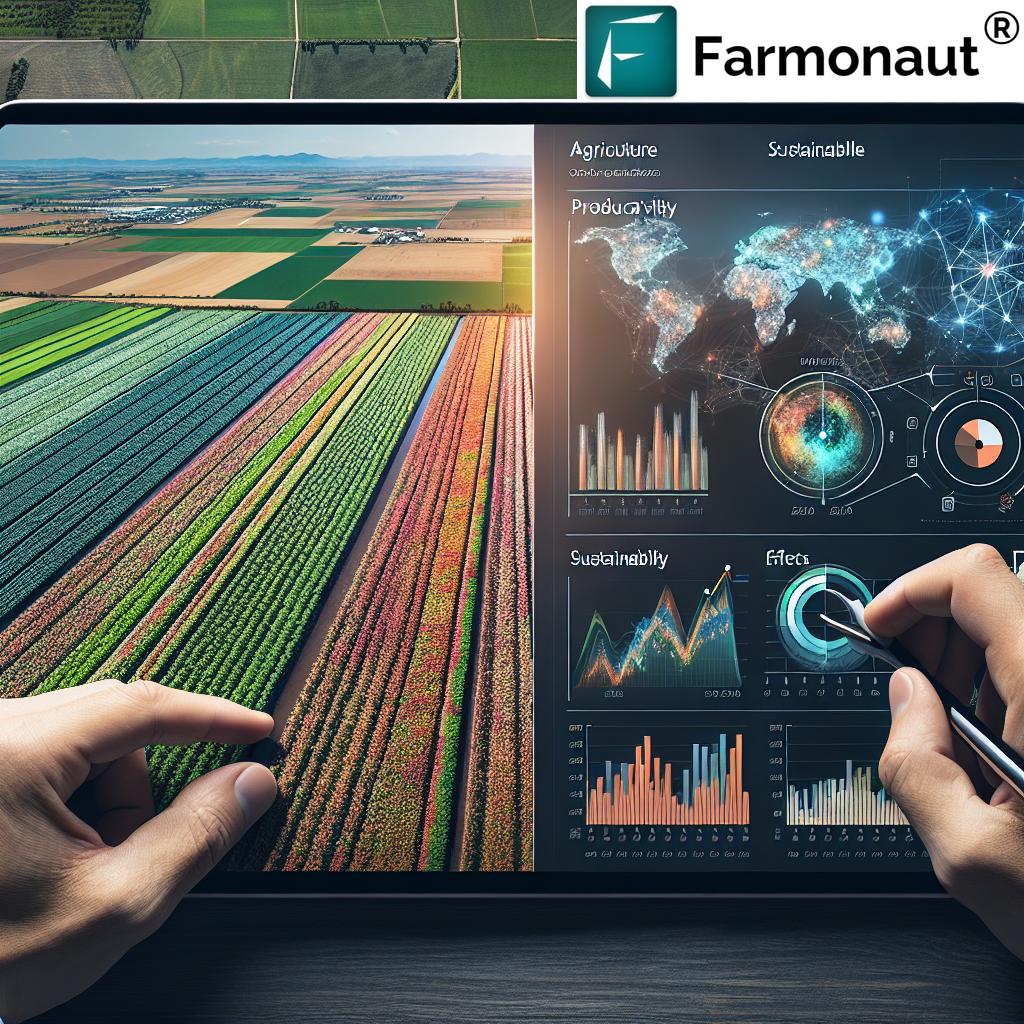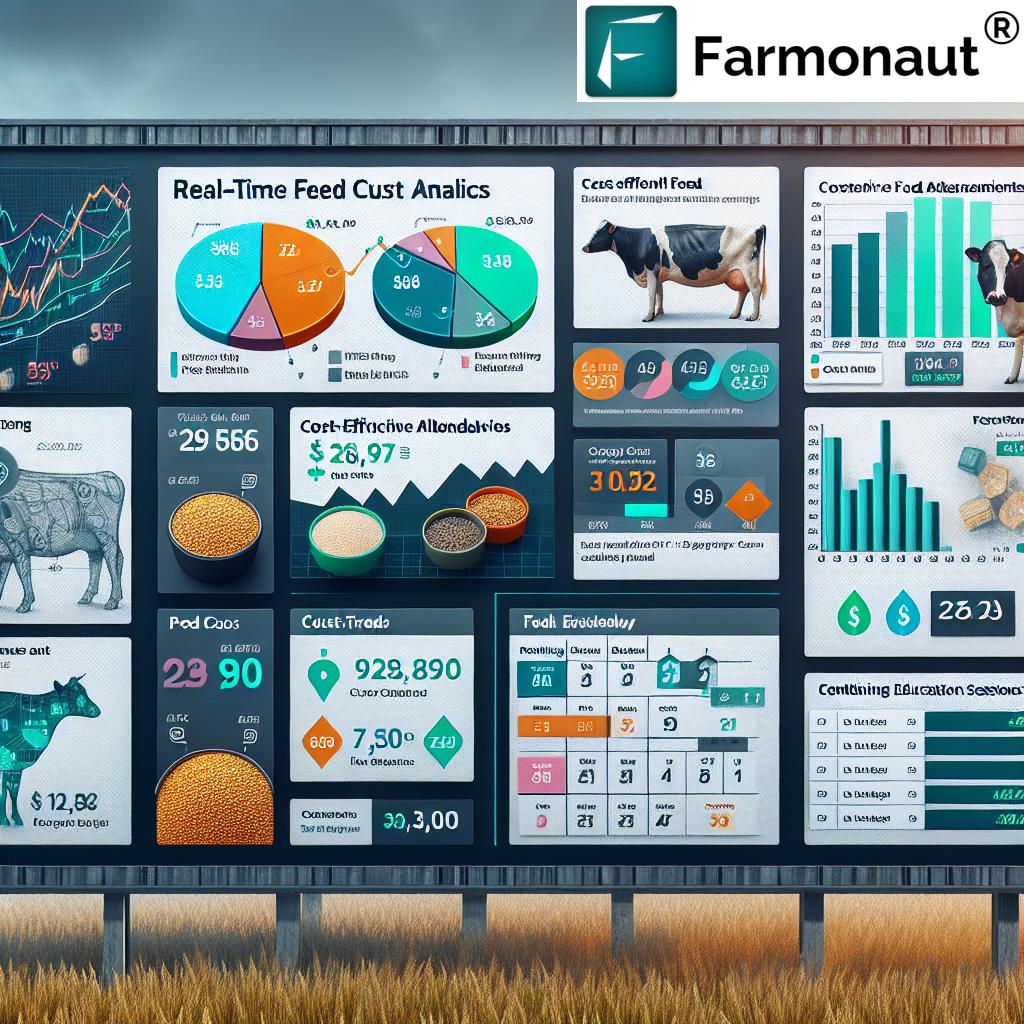Revolutionizing Wheat Farming: How AI and Satellite Data Boost Crop Yield Prediction
“AI-powered algorithms can analyze satellite data from over 10,000 acres of wheat fields in a single day.”
In the ever-evolving landscape of agriculture, we’re witnessing a remarkable transformation in how we approach wheat farming. The integration of artificial intelligence (AI) and satellite data has ushered in a new era of precision agriculture, fundamentally changing the way we predict crop yields and manage farms. This revolution is not just about technology; it’s about empowering farmers with data-driven insights to make informed decisions that can significantly boost productivity and sustainability.
The Dawn of Smart Farming Technologies in Wheat Production
Wheat, a staple grain that feeds billions worldwide, has been at the forefront of agricultural innovation. The advent of smart farming technologies has brought about a paradigm shift in how we approach wheat cultivation. Let’s delve into the cutting-edge solutions that are reshaping the industry:
- Satellite Crop Monitoring: Advanced satellites equipped with multispectral sensors provide real-time data on crop health, soil moisture, and various other critical parameters.
- AI and Machine Learning Algorithms: Sophisticated models analyze vast amounts of data to predict yields, detect diseases, and optimize resource allocation.
- IoT Sensors: On-ground devices collect granular data on soil conditions, weather patterns, and plant health, complementing satellite observations.
- Drone Applications: Unmanned aerial vehicles offer high-resolution imagery and targeted application of inputs, enhancing precision in farm management.
These technologies work in concert to provide farmers with unprecedented insights into their wheat crops, enabling them to make data-driven decisions that can significantly impact yields and sustainability.

Harnessing the Power of Agricultural Data Analytics
At the heart of this agricultural revolution lies the power of data. Agricultural data analytics has become the cornerstone of modern farming practices, especially in wheat production. By leveraging big data and advanced analytics, we can now:
- Predict crop yields with unprecedented accuracy
- Optimize fertilizer application based on specific soil needs
- Detect and respond to diseases and pests before they become widespread
- Manage water resources more efficiently
- Plan harvesting schedules to maximize grain quality
These capabilities are not just theoretical; they’re being put into practice by innovative companies like Farmonaut, which offers cutting-edge farm management software that integrates satellite data with AI-driven insights.
The Role of Machine Learning in Crop Yield Prediction
Machine learning in agriculture has revolutionized crop yield prediction. Complex algorithms process vast amounts of historical and real-time data to forecast wheat yields with remarkable accuracy. These models consider factors such as:
- Historical yield data
- Weather patterns and forecasts
- Soil quality and composition
- Satellite imagery showing crop health indices
- Pest and disease prevalence
By analyzing these diverse data points, machine learning models can provide farmers with early and accurate yield estimates, allowing for better planning and resource allocation throughout the growing season.
Satellite Crop Monitoring: Eyes in the Sky for Wheat Farmers
Satellite crop monitoring has emerged as a game-changer in wheat farming. These orbital sensors provide a wealth of information that was previously unattainable at such a large scale. Key benefits include:
- Vegetation health assessment through NDVI (Normalized Difference Vegetation Index)
- Early detection of stress factors like drought or nutrient deficiencies
- Mapping of crop growth stages across vast areas
- Identification of potential problem areas requiring immediate attention
Farmonaut’s platform leverages this satellite data to provide farmers with actionable insights, enabling them to make informed decisions about irrigation, fertilization, and pest management strategies.
“Precision agriculture techniques using satellite monitoring can reduce fertilizer use by up to 30% while maintaining crop yields.”
AI-Powered Disease Detection in Wheat Crops
One of the most significant advancements in wheat farming is the use of AI for crop disease detection. Diseases like wheat rust can devastate entire harvests if not caught early. AI algorithms, trained on vast datasets of diseased and healthy wheat plants, can now:
- Identify signs of disease from satellite and drone imagery
- Predict the spread of diseases based on environmental conditions
- Recommend targeted treatment strategies to minimize crop losses
This early warning system allows farmers to act swiftly, potentially saving entire wheat fields from devastating outbreaks.

Precision Fertilizer Application: Optimizing Nutrient Management
Precision fertilizer application is revolutionizing nutrient management in wheat farming. By leveraging AI and satellite data, farmers can now apply fertilizers with pinpoint accuracy, ensuring that each part of the field receives exactly what it needs. This approach offers several benefits:
- Reduced fertilizer waste and environmental impact
- Improved crop quality and yield consistency
- Lower input costs for farmers
- Enhanced soil health through balanced nutrient application
Farmonaut’s platform integrates soil testing data with satellite imagery to create precise fertilizer prescription maps, enabling farmers to optimize their nutrient management strategies.
Soil Moisture Sensors and Smart Irrigation
Effective water management is crucial for wheat production, especially in regions facing water scarcity. Soil moisture sensors combined with AI-driven irrigation systems are transforming how we approach water use in agriculture:
- Real-time monitoring of soil moisture levels
- Automated irrigation systems that respond to plant needs
- Integration with weather forecasts to optimize watering schedules
- Reduction in water waste and improved crop resilience
By leveraging these technologies, wheat farmers can ensure their crops receive the right amount of water at the right time, leading to improved yields and water conservation.
Weather Data Integration for Smarter Farming Decisions
Integrating weather data for farming is crucial in the era of climate change and unpredictable weather patterns. Advanced weather forecasting models, when combined with AI and satellite data, provide farmers with:
- Accurate short-term and long-term weather predictions
- Risk assessments for extreme weather events
- Guidance on optimal planting and harvesting times
- Recommendations for crop protection measures against adverse weather
Farmonaut’s platform incorporates real-time weather data and forecasts, allowing farmers to make proactive decisions to protect their wheat crops and optimize their operations.
Sustainable Agriculture Practices Through Technology
The integration of AI and satellite technology in wheat farming isn’t just about increasing yields; it’s also about promoting sustainable agriculture practices. These technologies enable farmers to:
- Reduce chemical inputs through targeted application
- Minimize soil erosion by optimizing tillage practices
- Improve biodiversity through precision pest management
- Reduce carbon footprint through efficient resource use
By adopting these sustainable practices, wheat farmers can not only improve their yields but also contribute to environmental conservation and long-term food security.
The Future of Digital Farming Solutions in Wheat Production
As we look to the future, digital farming solutions will continue to evolve, offering even more sophisticated tools for wheat farmers. Some exciting developments on the horizon include:
- Advanced predictive models that can forecast yields months in advance
- Integration of blockchain technology for improved traceability and transparency
- Autonomous farm equipment guided by AI and satellite data
- Enhanced genetic selection tools for developing resilient wheat varieties
These innovations promise to further revolutionize wheat farming, making it more efficient, sustainable, and resilient to future challenges.
Comparison: Traditional vs. AI-Powered Wheat Farming with Farmonaut
| Farming Aspect | Traditional Methods | AI-Powered with Farmonaut |
|---|---|---|
| Crop Yield Prediction Accuracy | 60-70% | 85-95% |
| Disease Detection Time | 7-14 days | 1-3 days |
| Fertilizer Optimization | Uniform application | Precision application, 20-30% reduction in use |
| Water Management Efficiency | 50-60% | 80-90% |
| Overall Farm Productivity | Baseline | 15-25% increase |
Embracing the Revolution in Wheat Farming
The integration of AI and satellite data in wheat farming represents a significant leap forward in agricultural technology. By embracing these innovations, farmers can:
- Increase yields while reducing input costs
- Improve the quality and consistency of their wheat crops
- Contribute to sustainable farming practices
- Make more informed decisions based on data-driven insights
Platforms like Farmonaut are at the forefront of this revolution, providing farmers with the tools they need to succeed in the digital age of agriculture.
To learn more about how you can leverage these technologies in your wheat farming operations, explore Farmonaut’s offerings:
For developers interested in integrating Farmonaut’s powerful satellite and weather data into their own applications, check out our API and API Developer Docs.
Farmonaut Subscriptions
Frequently Asked Questions
Q: How accurate are AI-powered crop yield predictions?
A: AI-powered crop yield predictions can achieve accuracy rates of 85-95%, significantly higher than traditional methods.
Q: Can satellite monitoring really detect crop diseases?
A: Yes, satellite monitoring combined with AI algorithms can detect early signs of crop diseases, often days before they become visible to the naked eye.
Q: How does precision fertilizer application benefit wheat farmers?
A: Precision fertilizer application can reduce fertilizer use by up to 30% while maintaining or even improving crop yields, leading to cost savings and environmental benefits.
Q: Are these technologies affordable for small-scale wheat farmers?
A: Companies like Farmonaut are making these technologies more accessible and affordable for farmers of all scales, with flexible pricing options and user-friendly platforms.
Q: How can weather data integration improve wheat farming?
A: Integrating weather data allows farmers to make informed decisions about planting, irrigation, and harvesting, optimizing crop management and reducing weather-related risks.
In conclusion, the integration of AI and satellite data in wheat farming is not just a technological advancement; it’s a transformative force that’s reshaping the future of agriculture. By embracing these innovations, wheat farmers can look forward to more productive, sustainable, and profitable operations. The future of wheat farming is here, and it’s driven by data, powered by AI, and observed from space.



